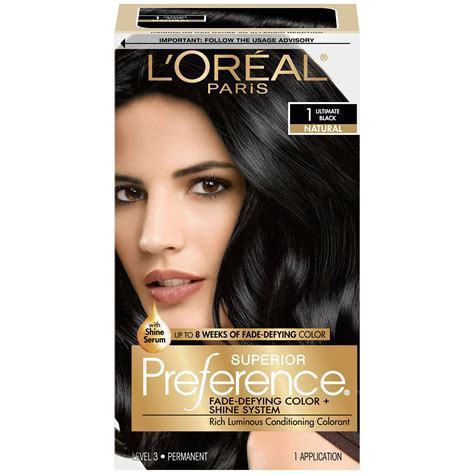Introduction
Black No. 1 Ddye, also known as Aniline Black, is the blackest of all black dyes. It is a synthetic dye that has been used for centuries to create the deepest and most intense blacks. In this comprehensive guide, we will explore everything you need to know about Black No. 1 Ddye, from its history and properties to its applications and safety precautions.

History and Properties
Black No. 1 Ddye was first synthesized in 1863 by the French chemist Philippe de Girard. It is a water-soluble dye that is produced by the oxidation of aniline. Black No. 1 Ddye is characterized by its exceptional lightfastness, heat stability, and resistance to chemicals and solvents.
Applications
Black No. 1 Ddye is widely used in a variety of applications, including:
- Textiles: Black No. 1 Ddye is used to create deep black fabrics for clothing, curtains, upholstery, and other textiles.
- Plastics: Black No. 1 Ddye is used to color plastics for automotive parts, electronics, and other products.
- Leather: Black No. 1 Ddye is used to create black leather products such as shoes, bags, and jackets.
- Paper: Black No. 1 Ddye is used to produce black paper for books, magazines, and packaging.
- Food: Black No. 1 Ddye is used as a food colorant in products such as licorice, chocolate, and blackcurrant jam.
Safety Precautions
When handling Black No. 1 Ddye, it is important to follow proper safety precautions. The dye can be harmful if ingested, inhaled, or absorbed through the skin. Gloves, protective clothing, and a respirator should be worn when working with the dye.
Effective Strategies for Using Black No. 1 Ddye
To achieve the best results when using Black No. 1 Ddye, follow these strategies:
- Use a high-quality dye from a reputable supplier.
- Test the dye on a small area before using it on a larger project.
- Follow the manufacturer’s instructions for mixing and applying the dye.
- Rinse the dyed material thoroughly after dyeing to remove any excess dye.
- Allow the dyed material to dry completely before handling.
Step-by-Step Approach to Dyeing with Black No. 1 Ddye
- Gather your materials: Black No. 1 Ddye, water, gloves, protective clothing, respirator, measuring cups and spoons, mixing container, dyeing container, stirrer, and thermometer.
- Prepare the dye bath: Fill the dyeing container with hot water and add the Black No. 1 Ddye according to the manufacturer’s instructions. Stir until the dye is completely dissolved.
- Immerse the material: Place the material to be dyed in the dye bath. Ensure that the material is completely submerged in the dye.
- Heat the dye bath: Gradually heat the dye bath to the desired temperature, stirring constantly. Maintain the temperature for the time specified by the manufacturer’s instructions.
- Rinse the material: After dyeing, rinse the material thoroughly with cold water to remove any excess dye.
- Allow the material to dry: Hang or lay the dyed material flat to dry completely. Avoid exposing the dyed material to direct sunlight.
Innovative Applications of Black No. 1 Ddye
In addition to its traditional applications, Black No. 1 Ddye is also being explored for innovative new applications, such as:
- Solar energy: Black No. 1 Ddye is being investigated as a coating for solar cells to improve their efficiency.
- Biomedical engineering: Black No. 1 Ddye is being used to create biocompatible materials for medical devices and implants.
- Nanotechnology: Black No. 1 Ddye is being used as a component in nanoscale devices and materials.
Tables
| Property | Value |
|---|---|
| Chemical structure | C6H5NHC6H4NH2 |
| Color Index number | 50415 |
| Molecular weight | 198.24 g/mol |
| Melting point | 112-114°C |
| Boiling point | 282°C |
| Solubility in water | 10 g/L at 25°C |
| Lightfastness | Excellent |
| Heat stability | Excellent |
| Chemical resistance | Excellent |
| Application | Advantages | Disadvantages |
|---|---|---|
| Textiles | Deepest and most intense blacks | Can be expensive |
| Plastics | Excellent colorfastness | May not be suitable for all plastics |
| Leather | Durable and resistant to wear | Can be schwierig to apply evenly |
| Paper | Ideal for printing and packaging | May not be suitable for all paper types |
| Food | Safe and non-toxic | May not provide the desired color in some applications |
| Safety Precaution | Reason |
|---|---|
| Wear gloves | Prevent contact with skin |
| Wear protective clothing | Prevent contact with clothing |
| Wear a respirator | Prevent inhalation of fumes |
| Avoid contact with eyes | Can cause irritation |
| Keep out of reach of children | Can be harmful if ingested |
| Strategy | Benefit |
|---|---|
| Use a high-quality dye | Ensure consistent results |
| Test the dye on a small area | Avoid costly mistakes |
| Follow the manufacturer’s instructions | Achieve optimal results |
| Rinse the dyed material thoroughly | Remove excess dye |
| Allow the dyed material to dry completely | Prevent fading |
Conclusion
Black No. 1 Ddye is a versatile and powerful dye that has been used for centuries to create the deepest and most intense blacks. Its exceptional lightfastness, heat stability, and resistance to chemicals and solvents make it ideal for a wide range of applications. By following the strategies outlined in this guide, you can achieve the best possible results when using Black No. 1 Ddye.
